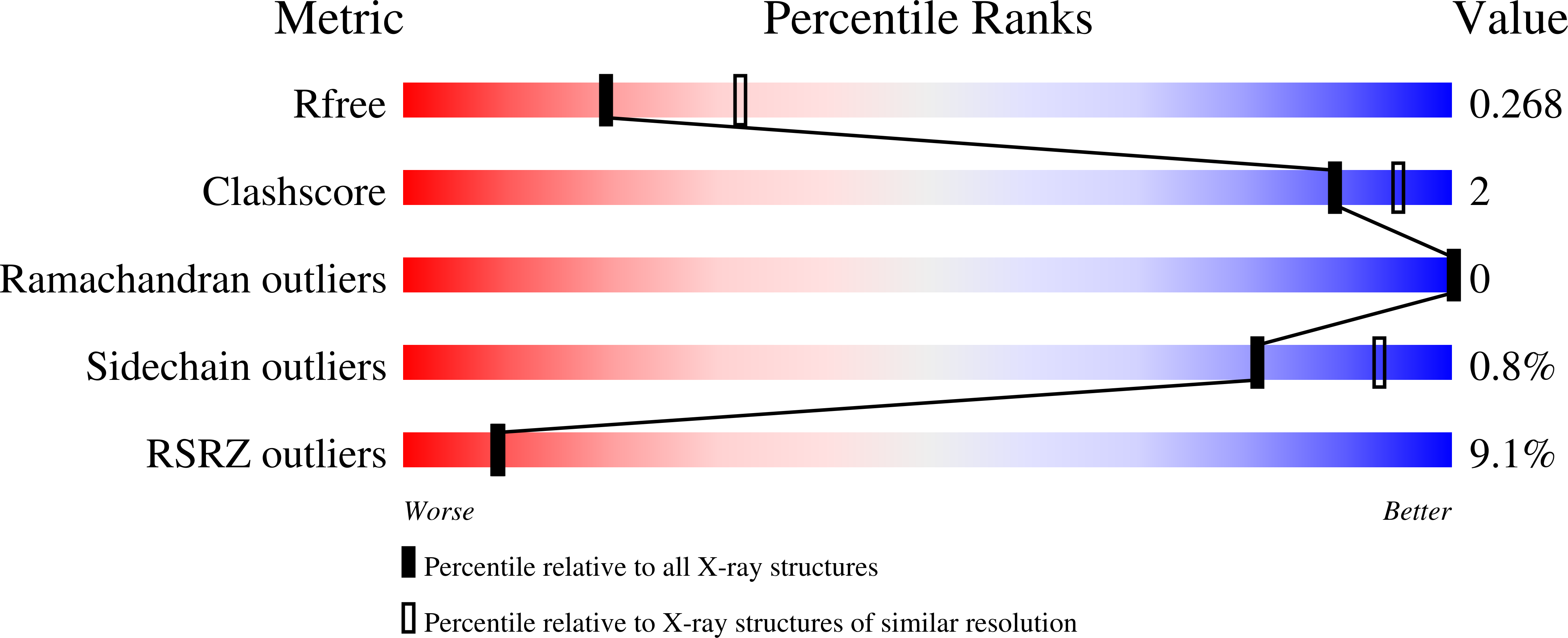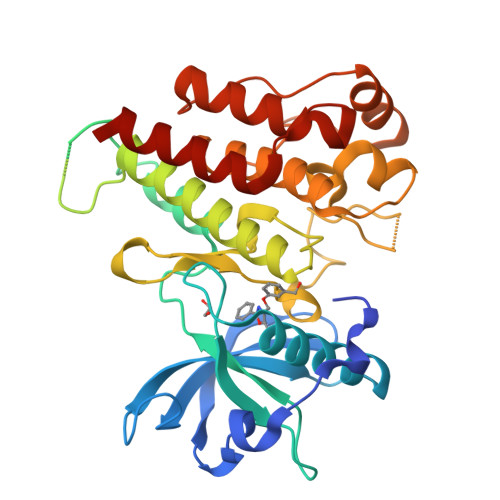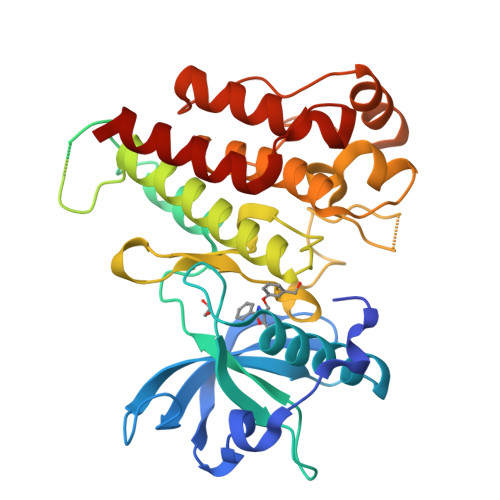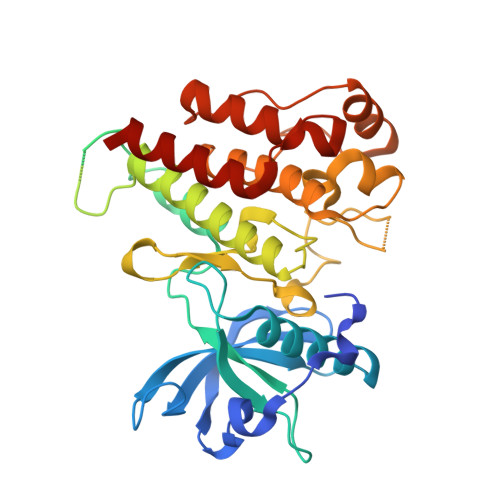A Back-to-Front Fragment-Based Drug Design Search Strategy Targeting the DFG-Out Pocket of Protein Tyrosine Kinases.
Iwata, H., Oki, H., Okada, K., Takagi, T., Tawada, M., Miyazaki, Y., Imamura, S., Hori, A., Lawson, J.D., Hixon, M.S., Kimura, H., Miki, H.(2012) ACS Med Chem Lett 3: 342-346
- PubMed: 24900475
- DOI: https://doi.org/10.1021/ml3000403
- Primary Citation of Related Structures:
3VHK, 3VID - PubMed Abstract:
We present a straightforward process for the discovery of novel back pocket-binding fragment molecules against protein tyrosine kinases. The approach begins by screening against the nonphosphorylated target kinase with subsequent counterscreening of hits against the phosphorylated enzyme. Back pocket-binding fragments are inactive against the phosphorylated kinase. Fragment molecules are of insufficient size to span both regions of the ATP binding pocket; thus, the outcome is binary (back pocket-binding or hinge-binding). Next, fragments with the appropriate binding profile are assayed in combination with a known hinge-binding fragment and subsequently with a known back pocket-binding fragment. Confirmation of back pocket-binding by Yonetani-Theorell plot analysis progresses candidate fragments to crystallization trials. The method is exemplified by a fragment screening campaign against vascular endothelial growth factor receptor 2, and a novel back pocket-binding fragment is presented.
Organizational Affiliation:
Discovery Research Laboratories, Oncology Drug Discovery Unit, Pharmaceutical Research Division, Takeda Pharmaceutical Company Ltd. , 26-1, Muraoka-Higashi 2-chome, Fujisawa, Kanagawa 251-8555, Japan.




















